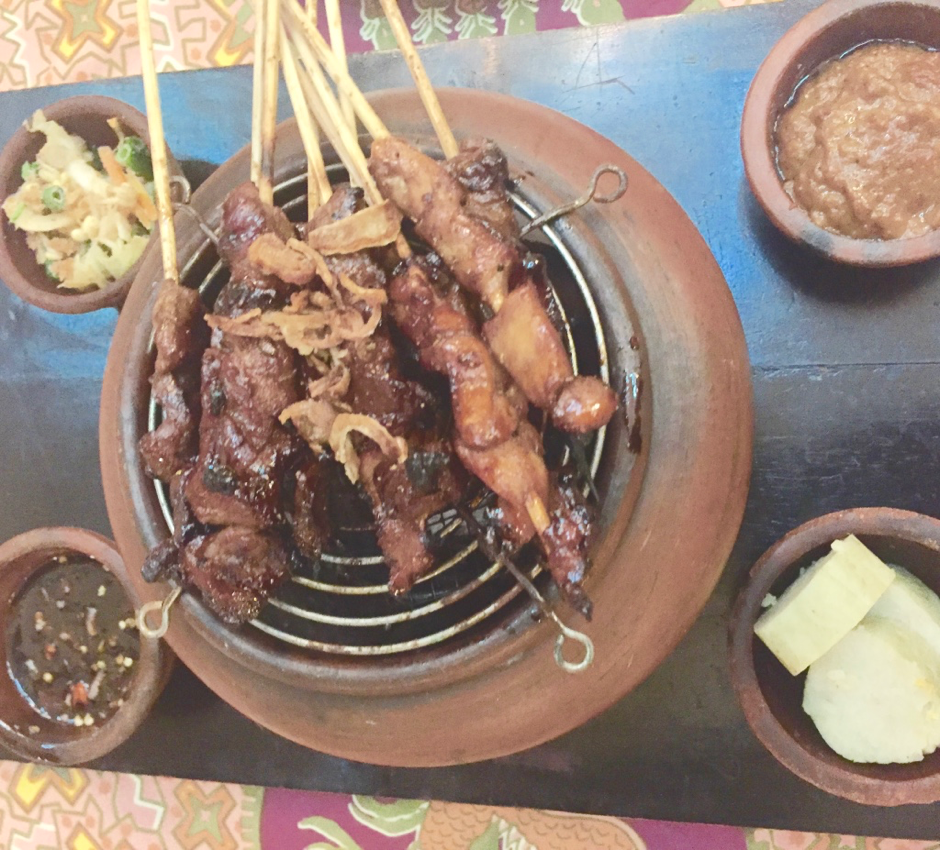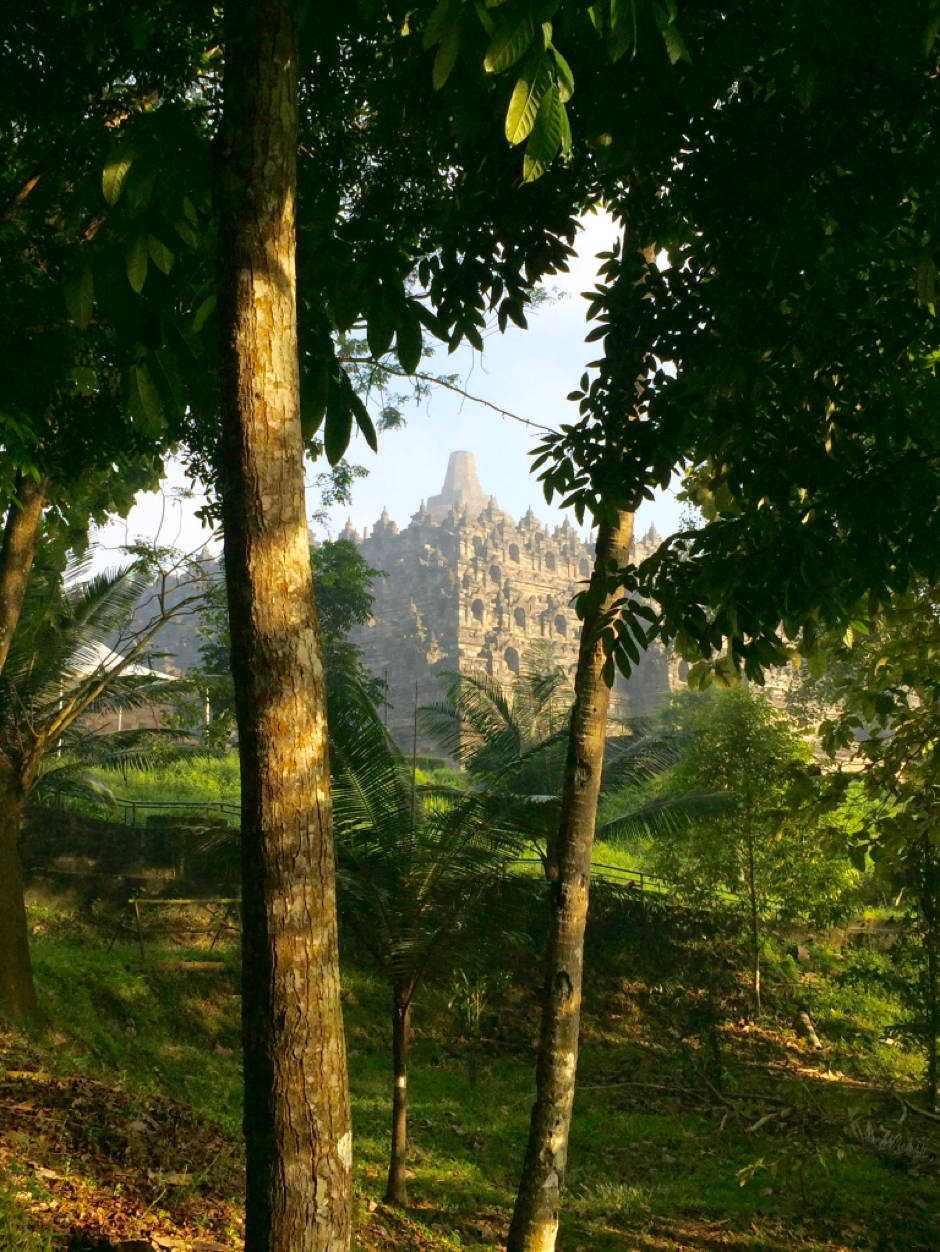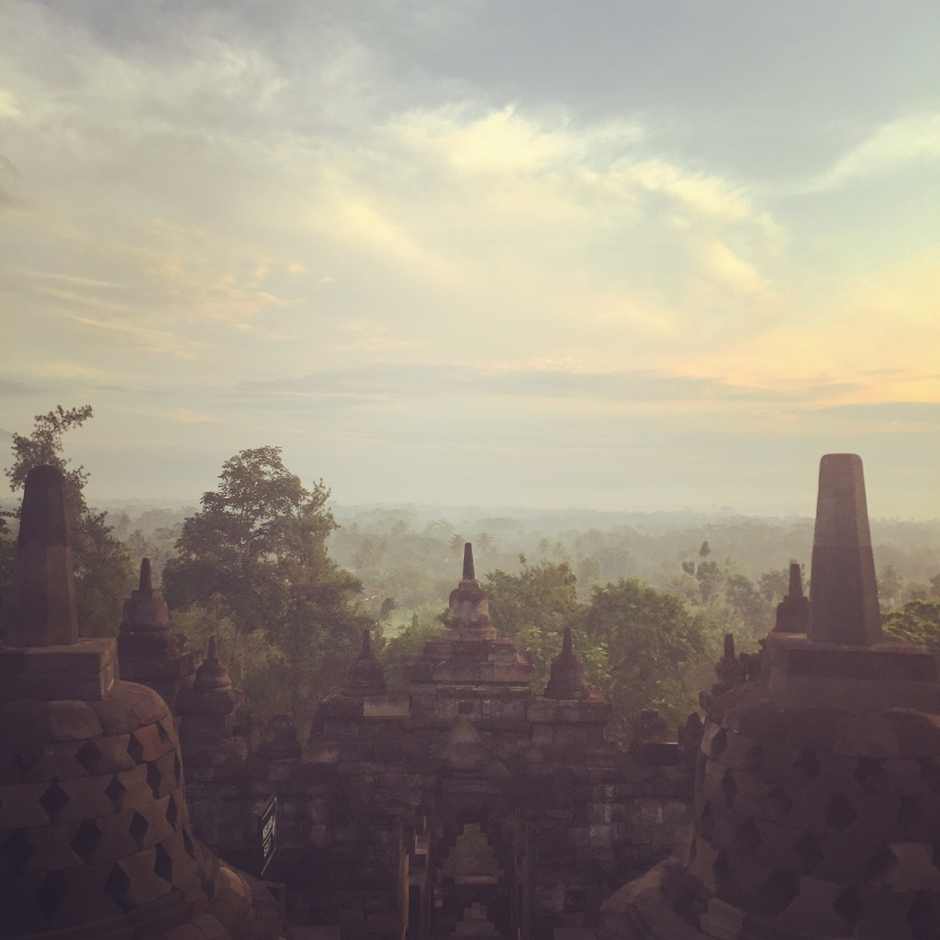When we planned this trip to Yogyakarta, we were surprised at how little guidance there was on art-related places to see and things to do. Yogyakarta (affectionately known as “Jogja”) is after all, known very well as an artistic and cultural centre in Indonesia.
We’ve therefore put together a little art-centric piece on things you might want to take note of, if you’re travelling to Jogja for a few days.
How to get there and back
Silkair and Air Asia do very decent and affordable 2 hr flights from Singapore. Be sure you get dropped off at the correct terminal for your return flight, as the domestic and international terminals are 200m apart. The path is unsheltered, uneven and not something you’d want to navigate with heavy luggage (trust us, we’ve walked it so you don’t have to).
Getting Around
We’d highly suggest hiring a car for getting around, especially if you don’t have a whole bunch of time to explore. They aren’t hugely expensive – 6 to 8 hours of a car and driver booked through the Phoenix Hotel cost us in the region of S$65-85 a day. Shared amongst the 3 of us, it was really quite affordable. Public transport does run, but taxis are hard to flag down off the street, unless you’re in super –touristy zones like Malioboro Street.
What this means is that you could probably get to a location from your hotel in a taxi, but will likely not be able to find your way back. Also, unless you speak Bahasa Indonesia or Malay, it’s hard to instruct cab drivers to wait for you. It’s really worth paying for phone data roaming services as drivers won’t have GPS and don’t always know how to get to places. (We can’t recall the number of times Google Maps came to our rescue).
Language
It’s possible to get around with just English, but if possible, travel with a Bahasa Indonesia or Malay speaker. People are generally warm and friendly, but being able to converse in the language adds a really special dimension to the trip, and allows you to make random friends or stumble upon little nuggets of information, especially in local restaurants and galleries.
Where to Stay
We were at the Phoenix (say “po-nix” not “fee-nix”) which is often marketed as Jogja’s equivalent of Singapore’s Raffles Hotel . It’s not- and don’t expect it to be. But that doesn’t mean it isn’t perfectly charming, with excellent food and drink.


While in Jogja, we were shown this amazing place, the Green Host. We’re told the bar is nice, but that the rooms may be a little poky. We’re looking forward to trying it out next time. If you get there before us, tell us what you think!
To visit Prambanan and Borobudur, we stayed at the Manohara on account of its awesome sunrise tour to Borobudur. It’s a great, affordable alternative to the Amanjiwo. You stay right on the park grounds, which makes for easy rolling out of bed at 4am to greet the sun (it’s worth it, trust us). Don’t expect major luxury, but the rooms are clean, very decently furnished and come complete with a 1000 year -old temple and giant Buddha in the backyard.



What we didn’t realise however, was that Prambanan was all the way across town; near the airport and a 90min drive from the Manohara. Our takeaway: Base yourself in Jogja city proper when planning that Prambanan trip. We would certainly not recommend covering both Prambanan and Borobudur while based at a place close to Borobudur (like the Manohara), unless you really don’t mind a 3hr car ride there and back (4 hrs 30 mins if you count the airport transfer that we did on the very same day).
Cash or Credit Cards?
Hotels are generally fine to accept cards, but most of the places we hung out at for food, dealt more easily in cash. Buying books, catalogues or merchandise from art galleries is also more easily done with cash.
What to do in Jogja?
Historical Stuff
Hands down Borobudur and Prambanan . Don’t dismiss them as another bunch of dull Asian temples, as they’re truly magical places. The Manohara worked well for us for Borobudur, although (as mentioned) less so for Prambanan, given the distance.



At Borobudur, our Manohara – appointed guide Jamal, was excellent and we’d highly recommend him, whether you book him through the hotel or not (e-mail us or leave a comment if you’d like his direct contact details). Our guide for Prambanan (booked on the spot at the temple complex itself) was less good, but it seemed to be down to luck, the kind of guide one would be assigned. You may also want to consider booking a private tour through Viator (which has some promising looking programmes).
At Prambanan, don’t miss the Ramayana Ballet. It’s a Javanese dance, not a ballet at all, but it’s well worth the price of a ticket. Email them in advance to book the seats (you can pay at the box office before the show), and go VIP. The show is 2 and a half hours long and the VIP ticket entitles you to an exponentially more comfortable seat, plus access to a private toilet.

We got to Prambanan at about 4pm and had an hour- long tour. We then planned to attend the ballet at 7.30pm, so that we wouldn’t have to make 2 separate trips to the temple complex . A few words of caution if you wish to do the same:
- Hire a car and driver for the trip. If you attend the ballet, and you don’t have a ride back to the hotel, it’s near impossible to find a cab after the show.
- The ballet is actually about 1km away from the main temple complex. So be prepared for a long walk if you do what we did. The main park closes at 5pm. This means that when you’re done with viewing the temples, you then need to walk for an additional 1km round the temple complex (and over a little river!) in order to reach the ballet site (signage is very poor, you’ll likely need to ask for directions along the way). At the ballet site, you can then pay for your tickets and have a meal before the show.
- As you can see from the above, there is ample time from the park’s closure (5pm) to the start of the ballet (7.30pm) to hike over to the ballet stage, collect your tickets and sit down for a meal.
- Don’t panic (as we did!) when the park empties out and it gets dark. There’s no need to leave the wider park grounds, just ask for directions to the ballet and walk on over. You’ll also need to tell your driver to pick you up from the ballet carpark, which is quite far away from the main Prambanan drop-off. We got help from a waiter at the ballet’s restaurant to speak to our driver, and tell him where to meet us.
- Don’t worry, the ballet is a tourist site, but it serves good food. It’s buffet-style, and serves mostly Indonesian cuisine. Well okay, there are some alternatives (we heard some Americans waxing lyrical about the broccoli options). But there you go. Broccoli. Versus this delicious brown mess of satay, bakmie, tempeh, gudeg and nasi goreng:

So I’m here for the art – why do I care about temples?
That’s an easy one.
We found that quite a bit of Javanese art is influenced by local legends and religious folklore – so understanding the source of the artists’ inspiration definitely adds another level of meaning when you’re looking at a work.
For example:
Consider Basuki Abdullah’s Djataju Fights Ravana for Princess Sita (1940 -1960). The legend of Djataju is premised on the Ramayana (depicted in the relief carvings in Prambanan, and re-enacted at the ballet). It’s worth reading up on the Ramayana story before a visit to Prambanan- in a nutshell, Djataju is Prince Rama’s heroic bird- friend, who tries to rescue Rama’s kidnapped wife Princess Sita, from a demon-king named Ravana.
Basuki was a great favourite of Indonesia’s President Sukarno and was famous for his dramatic paintings of powerful mythological scenes. Art historian John Clark argues that Sukarno’s commissioning and purchase of these works allowed him to imagine himself as an empowering mythical figure in the pieces; and that particularly, Djataju is an allegory for male power, being a “modern Indonesian depiction of the male fantasy of sexual conquest.” The art also served a purpose in rousing nationalistic feelings amongst citizens (through its association with hallowed Indonesian traditions of the past); thereby supporting legitimacy for Sukarno’s own rule at the time.

This is part of the scene being played out in the Ramayana ballet:


Another bit of the Ramayana legend involves Princess Sita having to prove that she is still chaste after the kidnapping. Rama asks her to walk through fire to prove her purity (as you do). She obliges, and emerges unscathed. Indonesian artist Arahmaiani had a few things to say about this particular bit of mythological misogyny, which she addressed in her 2004 performance video I Don’t Want To be Part of Your Legend:
![I-Dont-want-to-be-a-Part-of-Your-Legend-5-2004-1024x798[1]](https://pluralartblog.files.wordpress.com/2016/07/i-dont-want-to-be-a-part-of-your-legend-5-2004-1024x7981.jpg)
A great interview with the artist and brief discussion on the work can be found here, if you’re interested.
So you see, history and myth have fair bit to do with art after all.
Next up in Part II of the Jogja Joget Travelog: Restaurants and art spaces we visited in Jogja.











